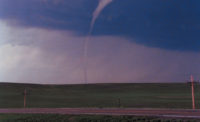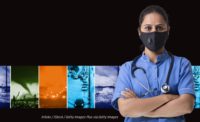Public lacks emergency preparedness for natural disaster, severe weather events

Image by starline via Freepik
Despite acknowledging an uptick in severe weather events and natural disasters, the general public still does not feel adequately prepared. That’s according to Rave Mobile Safety’s (Rave) 2022 Natural Disaster and Severe Weather Preparedness report.
In 2021, the United States had some of the worst natural disasters and severe weather ever recorded, including 18 weather disasters that cost more than one billion dollars in damages and response. With the first half of 2022 already delivering record heat and storms, residents, public safety agencies, state and local governments, workplaces and more must prepare for these increasingly common events. To better understand how the public thinks about and prepares for natural disasters and severe weather events, Rave fielded a national survey of over 1,000 respondents in June 2022.
The survey found three main trends:
Public Concerns and Emergency Preparedness
With intense heat, hurricanes, wildfires and tornadoes occurring more often, it’s not surprising that survey respondents generally recognize that natural disasters, including severe weather events, are cause for increasing concern — both now and in the future.
Only 14% of respondents stated they are hardly or not at all concerned that the intensity and frequency of natural disasters will increase in the coming years. Yet despite elevated concerns, only 27% of respondents said they felt extremely or very prepared to handle a natural disaster or severe weather event.
Although most respondents did not feel extremely prepared, more than half stated that they had taken at least some steps to prepare for major weather events. More than half (54%) have put together a safety kit (including items such as flashlights, clean water, non-perishable snacks, a radio, etc.), 48% have signed up for emergency notifications from their local government and/or public safety department and 36% have created an evacuation plan.
When it comes to receiving information about severe weather events, 62% of respondents report receiving alerts through a weather app, and 56% receive text alerts from local and/or state officials. When asked about communication preferences, most respondents (61%) stated they would prefer to receive updates about natural disasters, including severe weather events, via text or SMS notifications. This response demonstrates an opportunity for public safety departments, government officials and corporate representatives to expand how, why and when mass notification systems are used.
Trust in Public Safety
During natural disasters and other severe weather events, first responders, public safety and emergency management teams are among the first to interact with residents, get the information and respond to emergencies. Most respondents (86%) have at least a fair level of confidence that these entities are adequately prepared to handle natural disasters and severe weather events. This level of confidence persists when it comes to addressing the needs of at-risk residents — the elderly, those with mental or physical disabilities or people with specific medical needs. Most respondents (80%) report having at least a fair level of confidence in local public safety and emergency management agencies having adequate information to address the needs of vulnerable populations.
Despite high levels of confidence, there are steps these entities can take to further improve community preparedness. For example, the survey shows that almost half of respondents (46%) indicated that more communication from local officials leading up to severe weather events would make them feel more prepared.
Trust in Workplaces
As with public safety departments, the majority of respondents (85%) said they generally trust that their workplace is prepared to protect them during a natural disaster or severe weather event. This high vote of confidence could stem from good communication practices, given that most workplaces communicate with their employees via text (51%) or email (30%) during a severe weather event.
But there are steps that workplaces can take to better prepare their employees for extreme weather. Even though most employees (73%) feel as though they are aware of procedures or protocols to follow should a natural disaster, including a severe weather event, occur, there are still steps that employers can take to make employees feel even safer at work. These include holding training (47%), making safety plans digital (40%) and offering a convenient workplace safety application (40%).
For more details on these findings, download the complete 2022 Rave Natural Disaster and Severe Weather Preparedness report.
Looking for a reprint of this article?
From high-res PDFs to custom plaques, order your copy today!





